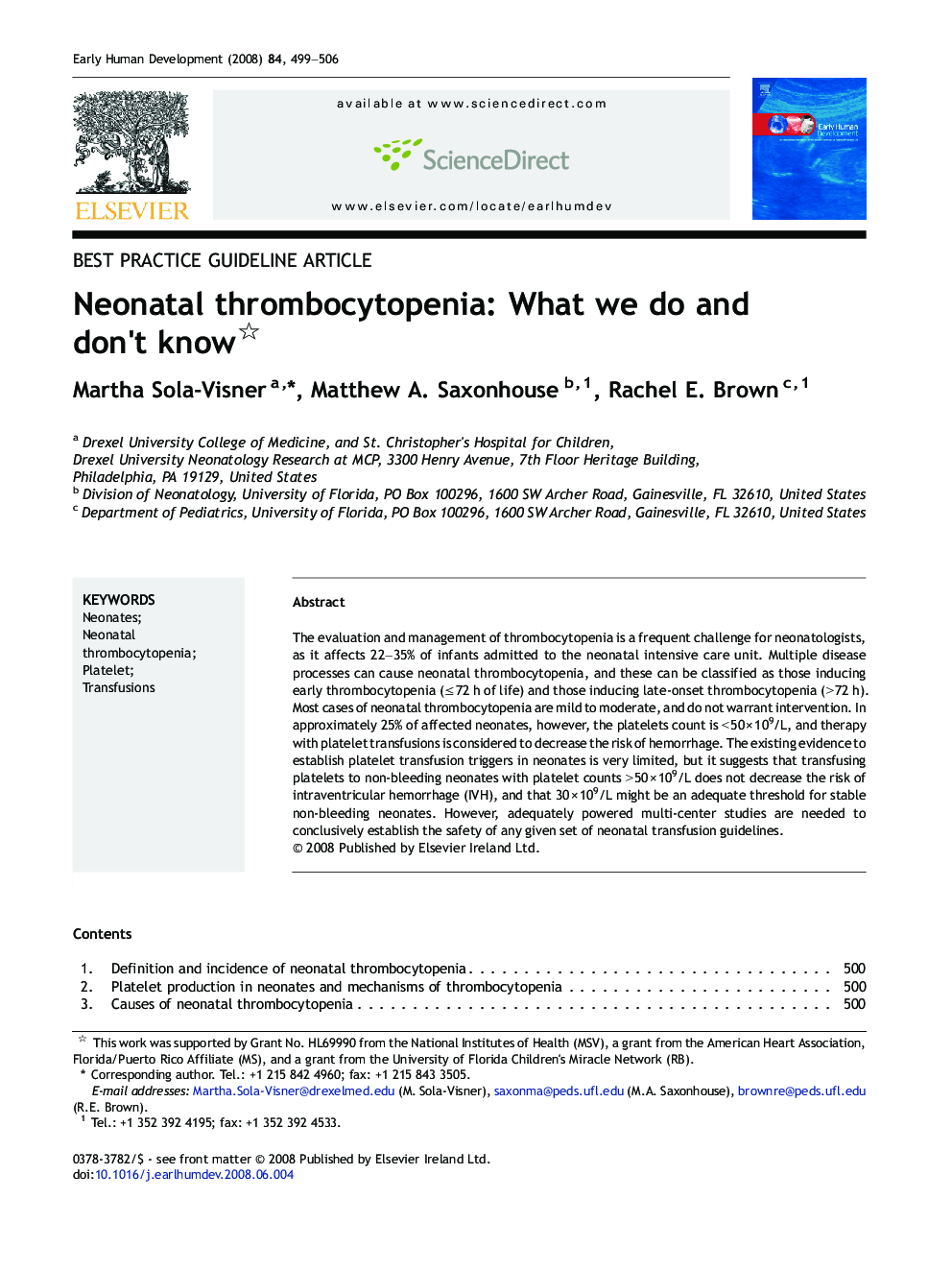| Article ID | Journal | Published Year | Pages | File Type |
|---|---|---|---|---|
| 3918188 | Early Human Development | 2008 | 8 Pages |
The evaluation and management of thrombocytopenia is a frequent challenge for neonatologists, as it affects 22–35% of infants admitted to the neonatal intensive care unit. Multiple disease processes can cause neonatal thrombocytopenia, and these can be classified as those inducing early thrombocytopenia (≤ 72 h of life) and those inducing late-onset thrombocytopenia (> 72 h).Most cases of neonatal thrombocytopenia are mild to moderate, and do not warrant intervention. In approximately 25% of affected neonates, however, the platelets count is < 50 × 109/L, and therapy with platelet transfusions is considered to decrease the risk of hemorrhage. The existing evidence to establish platelet transfusion triggers in neonates is very limited, but it suggests that transfusing platelets to non-bleeding neonates with platelet counts > 50 × 109/L does not decrease the risk of intraventricular hemorrhage (IVH), and that 30 × 109/L might be an adequate threshold for stable non-bleeding neonates. However, adequately powered multi-center studies are needed to conclusively establish the safety of any given set of neonatal transfusion guidelines.
